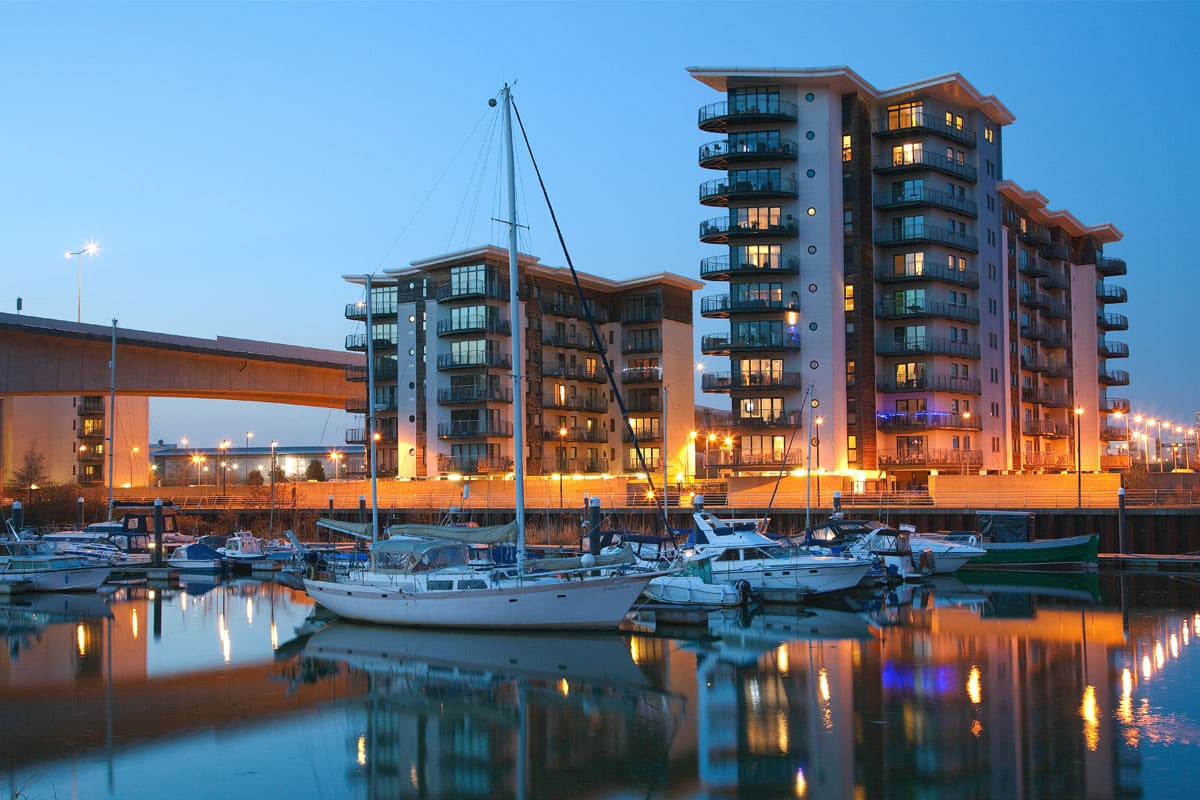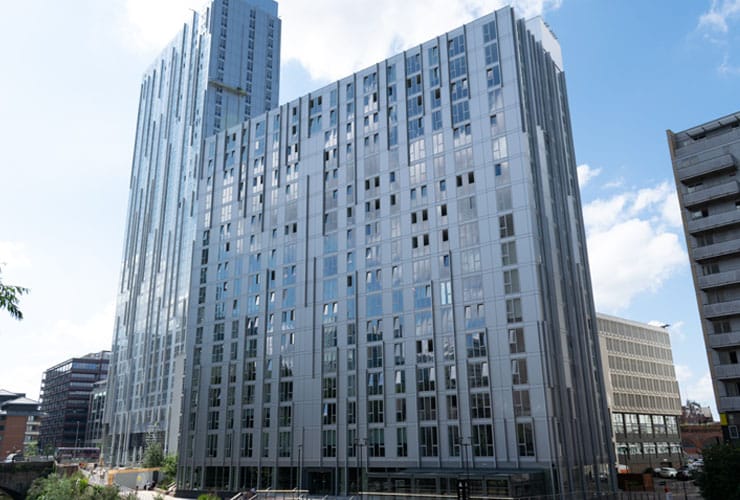What is Build-to-Rent & How it Works?
Build-to-rent (BTR) is one of the fastest-growing property sectors in the UK, where entire developments are specifically designed, built, and managed for renters.
Unlike traditional rental properties, these schemes are not sold to individual landlords or homeowners but are instead owned and operated by large institutional investors and development companies. With purpose-built amenities, professional management, and flexible tenancy terms, build-to-rent developments are transforming how the UK rental market works and offering a new housing solution for long-term tenants.

-
by Robert Jones, Founder of Property Investments UK
With two decades in UK property, Rob has been investing in buy-to-let since 2005, and uses property data to develop tools for property market analysis.
What is a Build-to-Rent Scheme?
Build-to-rent homes are homes developed and built specifically for the rental market. They are homes built specifically for renters and this is often the terminology you will see on the major UK property portals when looking in the search listings for properties, they will often be tagged as 'built specifically for renters'.
Build-to-rent homes are not made to sell.
They are neither sold to owner-occupiers nor sold to individual buy-to-let landlords. The entire development is purpose-built with one aim in mind, to rent out with one block management in place and keep rented for the long term to provide affordable local housing.
Some of the property terminology and acronyms can be confusing, but build-to-rent is sometimes known as BTR or B2R for short.
The largest sites can require a lot of capital investment. Think 1,000 + properties in London being developed in one site. You can see why pension funds or insurance companies are the main players in this market. With companies like Legal & General building huge flagship developments like this one in Wandsworth.
Yet not all of these companies have the experience to build housing. So build-to-rent developments are generally developed by or with the involvement of large property development companies, large landlords, pension funds and institutional investors combining resources of finance, knowledge, construction teams and unlocking land that has been land banked.
Both UK and overseas investors are active in the sector. Build-to-rent is considered a new asset class for property investors and corporate investors at a larger scale and is very appealing with high rental yields and in major locations that have continued potential for capital growth.
Significant names in BTR include Greystar, Sigma Capital Group, Get Living, Fizzy Living and Grainger. Household names like Legal & General, John Lewis and Lloyds Bank are also active in the sector.
BTR developments are usually restricted to apartments/maisonettes in large city centres. Frequently, these places have large younger populations and access to good public transport. However, some developers are moving into or considering single-family build-to-rent houses in the suburbs, like these homes from Simple Life, which have houses and apartments in St Helens and Salford.

Access our selection of exclusive, high-yielding, off-market property deals and a personal consultant to guide you through your options.
Is BTR the same as PRS?
No, build-to-rent (BTR) is not the same as the private rented sector (PRS) or traditional buy-to-let (BTL). They are distinct models in the rental property market.
- Build-to-rent is for the big developers. They source land and build large developments, often with hundreds of apartments in one location. These are often built and managed with an end long-term owner in mind like a pension fund or are held long-term by the developer. The tenant profiles are similar, think purpose-built student accommodation, social housing or families. Planning, financing, tenant suitability and exit strategy are very different in this market than traditional buy-to-let.
- Buy-to-let can be for all sizes of property portfolios and is often considered as the private rented sector (PRS). From beginner landlords, and property investors growing a portfolio, to larger developments or mixed-use portfolios owned by experienced landlords and a mix of properties and tenants.
How Big is the BTR Market?
Build-to-rent is much larger and more established in other countries like the US. Currently, however, build-to-rent makes up only a comparatively small proportion of the rental market in the UK. However, some data suggest that BTR is growing fast and will be a much larger part of the rental market in the future, as the government looks to grow the supply of rental properties, with larger companies that can be seen as more able to 'add' net new properties rather than convert existing properties from already established housing stock.
According to figures from the British Property Federation (BPF) the largest supply of BTR is in London with 104,025 units. Combined there are only 159,498 units in the rest of the country outside of London. You can see on their build-to-rent map that the major cities is where most of the new build activity is which is to be expected.

Is Built-to-Rent worth it for Tenants? What Makes them Attractive?
Build-to-rent developments are new builds with a contemporary design that suits modern living styles with mod cons. They may also be partly or fully furnished.
Build-to-rent developments often include amenities such as a concierge, gym, communal lounge, roof terraces, secure cycle storage and cinema room. They may offer on-site social activities to residents. Developers usually aim to create a community, not solely an accommodation to rent.
Build-to-rent developments are professionally managed, often by on-site management. Repairs and maintenance will be attended to quickly by an on-site team. They may have on-site security.
Build-to-rent properties are usually very tech-focused and often use an online platform or app to help manage lettings, repairs and maintenance.
Developments usually offer super-fast broadband, perhaps included in the rent.
Build-to-rent developments usually charge no additional fees. Residents only pay a deposit (some BTR schemes do not require a deposit) and their monthly rent.
Rent increases are specified at the start of the tenancy, so residents know when the rent will rise and by how much. This allows them to budget more easily.
Many properties take pets and have facilities for them, which PRS landlords generally do not.
Build-to-rent developments usually offer renters the opportunity to take longer-term tenancies. Tenancies may range from 6 months to three years, offering renters added security compared to a standard 6 to 12-month AST with a conventional private landlord.
What are the Negatives of Build-to-Rent?
Design
Many build-to-rent developments are tower blocks and consist of uniform property types. They may be characterless and impersonal when compared to more traditional properties in local communities.
Tenant suitability
Some BTR properties are aimed at certain specific demographics: for instance, young people aged 18-35, over 65+ residents, or families of a certain size. They could be described as lifestyle developments, attuned to a specific lifestyles and may not suit everyone. An example off this could be PBSA or purpose-built student accommodation which is a kind of build-to-rent but for students only.
Rent affordability
Build-to-rent homes are typically more expensive than comparable properties in the private rental market. As they are brand new, rents will start at the current peak of the rental market, meaning tenants moving into a new development will be paying a higher rent than an established tenant in a comparable property nearby that may have started their tenancy 12 or 24 months earlier and haven't had a rent renewal.
Rents have been going up year on year recently which makes this the outcome in most major cities like Manchester, Birmingham and London.

Is BTR a Good Property Investment?
There are several reasons behind large institutional investors and developers becoming increasingly active in the sector. It is a way for large publicly traded companies to enter the UK rental sector, whilst putting large funds to use in one go. Take Grainger as an example that currently has a £2 billion investment in to the UK's property market.
Build-to-rent is helping to provide in-demand new homes faster than would otherwise be possible.
Build-to-rent allows investors to invest in residential rental properties at scale. BTR developments may have anything from 50 to several hundred homes each. They can also allow investors to benefit from the economies of scale in operation, resulting in enhanced yields. They also do what they can to encourage tenants to stay long-term, potentially having fewer voids which can mean a greater return.
With BTR, developers and investors often partner with public bodies, who may have access to suitable land for development.
And finally, build-to-rent has a unique status within the National Planning Policy Framework (NPPF), which may help with the progression of new schemes.
However, there exist some possible disadvantages of build-to-rent for investors considering the model, as it is simply not one for beginners and the average landlord.
BTR schemes have a high initial entry cost. Developers and investors must finance site purchase costs, design and planning costs, infrastructure contributions, construction costs and the costs of setting up and running the development. These costs are often tens if not hundreds of millions per development.
Can Private Landlords Invest in Build-to-Rent?
Not directly.
There are lots of ways for smaller real estate investors, developers and landlords to get involved in the UK property market, however, BTR isn't one of them.
The solution, therefore, is to buy investment property directly, by finding and buying an individual property or small portfolio of existing housing (which can still include new-build developments).
Or alternatively, if you prefer a hands-off approach, you can consider investing in to the larger players in the BTR market by purchasing shares in the PLC companies that operate in that part of the housing market or by purchasing shares in a Real Estate Investment Trust which is listed on a stock exchange.
